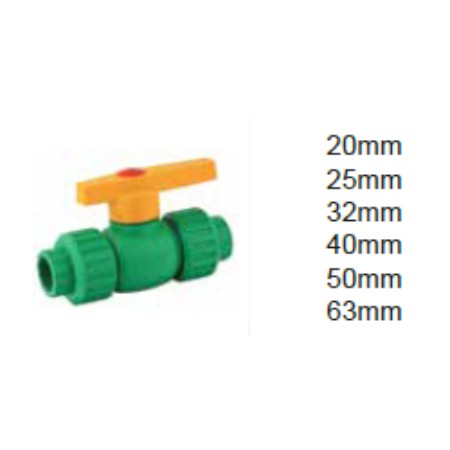PPR Ball Valve
PPR Ball Valve
A PPR hand ball valve is a type of valve that controls the flow of fluid or gas through PPR (Polypropylene Random Copolymer) pipe systems. PPR pipes are frequently used in heating and cooling systems, hot and cold water delivery systems, and plumbing.
The PPR hand ball valve regulates the flow of fluid or gas through the valve by containing a ball inside the valve body. The ball rotates when the valve is open, allowing fluid or gas to pass through. The ball rotates to stop the passage of fluid or gas when the valve is closed. Turning a handle fastened to the valve body opens and closes the valve manually.
.jpg)

 Cash on delivery available
Cash on delivery available Returns allowed
Returns allowed_(600_x_600)2.jpg)
_(600_x_600).jpg)
_(600_x_600)1.jpg)
